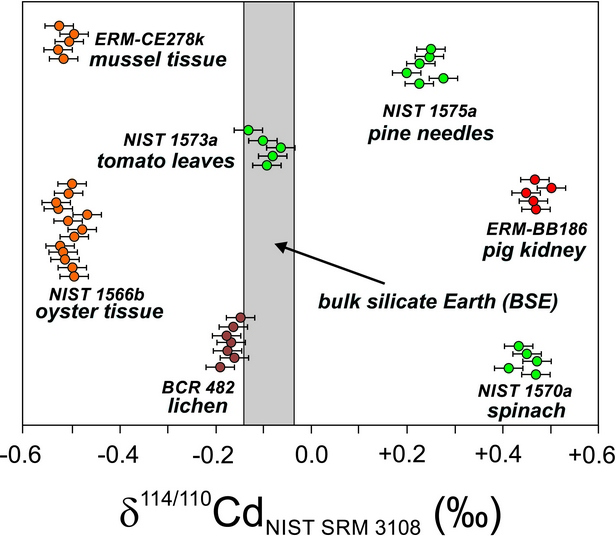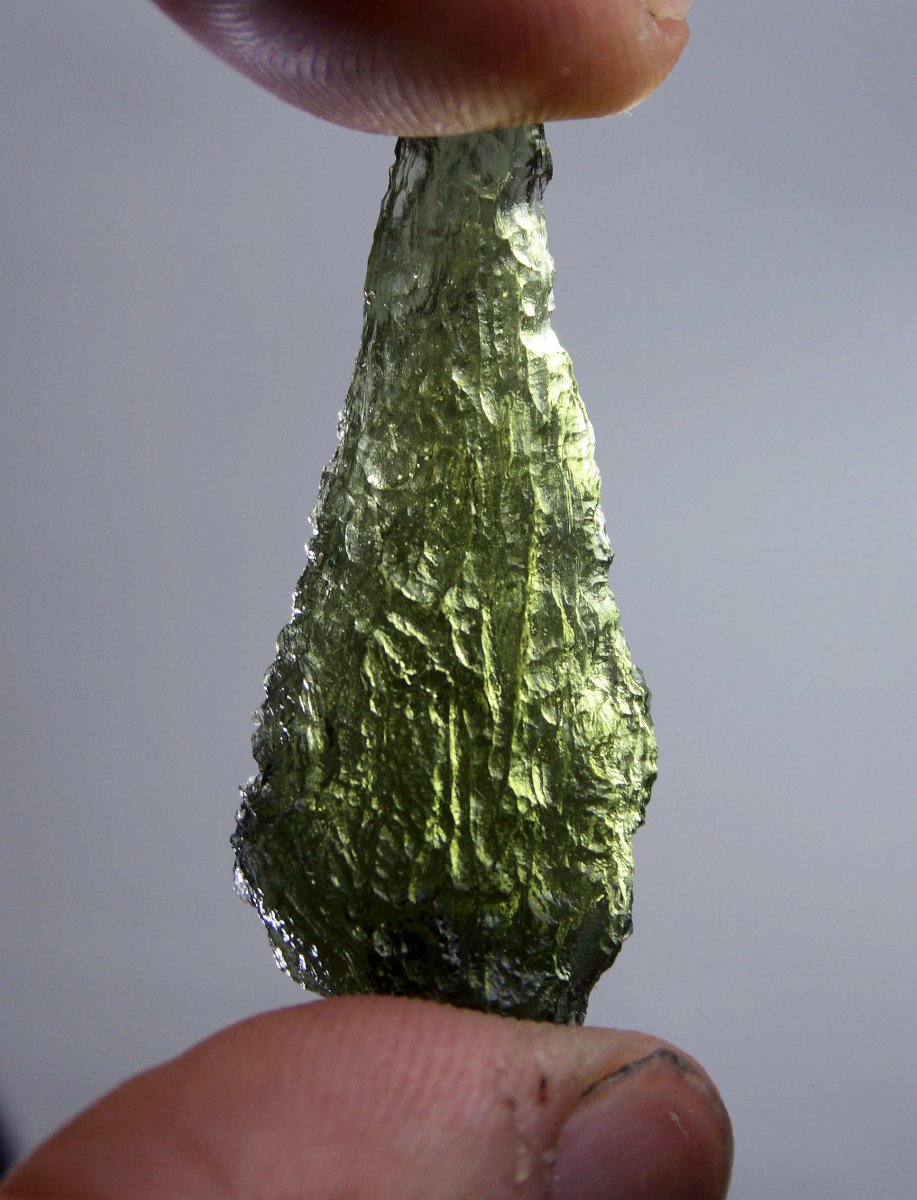Matters of interest
Pokrok ve studiu kadmia
 Cadmium is a toxic metal widely distributed in the environment, often due to human activity. Natural cadmium is composed of eight isotopes, and their proportions may vary slightly in different environmental compartments. This is due to a phenomenon called isotopic fractionation. Modern analytical methods allow these subtle variations to be measured, which can be useful in investigating the behaviour of cadmium in the environment. The researchers of the Institute of Geology of the Czech Academy of Sciences have established a method for measuring Cd isotopes in biological samples using thermal ionization mass spectroscopy (TIMS).
Cadmium is a toxic metal widely distributed in the environment, often due to human activity. Natural cadmium is composed of eight isotopes, and their proportions may vary slightly in different environmental compartments. This is due to a phenomenon called isotopic fractionation. Modern analytical methods allow these subtle variations to be measured, which can be useful in investigating the behaviour of cadmium in the environment. The researchers of the Institute of Geology of the Czech Academy of Sciences have established a method for measuring Cd isotopes in biological samples using thermal ionization mass spectroscopy (TIMS).
Isotopic composition of Cd in a sample is usually related to the isotopes 110Cd and 114Cd. It is expressed as a deviation (δ110/114Cd) from the value of an internationally recognized standard, which has δ110/114Cd value of zero by definition. Negative values of δ110/114Cd therefore indicate an enrichment with a lighter Cd isotope compared to this standard and vice versa.
By analysing a diverse set of samples of biogenic certified natural materials, we demonstrated a relatively wide range of isotopic variation of Cd. As can be seen from the figure, the δ110/114Cd values in the studied materials were significantly different. Strikingly negative values were observed in marine organisms (oysters and mussels), which were enriched with the lighter isotope. In contrast, a heavier Cd isotope enrichment was found in spinach leaves and pig kidney samples.
The obtained results published in the renowned analytical journal Talanta represent a useful tool in quality control of chemical analyses for all laboratories dealing with Cd isotopic analysis.
An improved theory of moldavite formation
 According to the generally accepted theory, moldavites were formed at high pressures and temperatures from superficial Tertiary sediments in the Ries area in Germany during an impact of a huge meteorite 14.75 million years ago. A giant crater is to remind of this meteorite impact. The study published in the Geochimica et Cosmochimica Acta journal focused on a detailed comparison of chemical composition of moldavites and their presumed parent rocks located at the impact site. The analyses confirmed the known marked discrepancies in the contents of many elements between the source materials and moldavites. These discrepancies were now explained by an innovated model of moldavite origin. Material which functioned as the source for moldavites included, besides Tertiary sediments, also some amounts of organic material and soil. Material ejected from the impact site at a speed of several kilometres per second was subjected to complex interactions between the melt and the part of the ejected mass transferred into plasma. The key motive of the new model is the disintegration of melt into fine micro-drops due to the escape of volatile compounds. It was the form of micro-drops which was responsible for the loss of some volatile elements as well as for the enrichment in other elements which condensed on their surface or had the form of separate drops. Moldavites, as found today, were then formed by merging of fine drops and by the formation of larger bodies in the process of mass transport above the level of the atmosphere. Finally, they were deposited mostly in the territory of the present Czech Republic. Besides the Ries area, yet other impact structures were studied within the project financed by the Czech Science Foundation. The meteorite which impacted the Zhamanshan crater in Kazakhstan about one million years ago was characterized as for its elemental composition.
According to the generally accepted theory, moldavites were formed at high pressures and temperatures from superficial Tertiary sediments in the Ries area in Germany during an impact of a huge meteorite 14.75 million years ago. A giant crater is to remind of this meteorite impact. The study published in the Geochimica et Cosmochimica Acta journal focused on a detailed comparison of chemical composition of moldavites and their presumed parent rocks located at the impact site. The analyses confirmed the known marked discrepancies in the contents of many elements between the source materials and moldavites. These discrepancies were now explained by an innovated model of moldavite origin. Material which functioned as the source for moldavites included, besides Tertiary sediments, also some amounts of organic material and soil. Material ejected from the impact site at a speed of several kilometres per second was subjected to complex interactions between the melt and the part of the ejected mass transferred into plasma. The key motive of the new model is the disintegration of melt into fine micro-drops due to the escape of volatile compounds. It was the form of micro-drops which was responsible for the loss of some volatile elements as well as for the enrichment in other elements which condensed on their surface or had the form of separate drops. Moldavites, as found today, were then formed by merging of fine drops and by the formation of larger bodies in the process of mass transport above the level of the atmosphere. Finally, they were deposited mostly in the territory of the present Czech Republic. Besides the Ries area, yet other impact structures were studied within the project financed by the Czech Science Foundation. The meteorite which impacted the Zhamanshan crater in Kazakhstan about one million years ago was characterized as for its elemental composition.
Reference:
Žák, K. – Skála, R. – Řanda, Z. – Mizera, J. – Heissing, K. – Ackerman, L. – Ďurišová, J. – Jonášová, Š. – Kameník, J. – Magna, T.: Chemistry of Tertiary sediments in the surroundings of the Ries impact structure and moldavite formation revisited. Geochimica et Cosmochimica Acta. 179 (2016), 287–311.
Microbial precipitates in old iron ore mines (central Bohemia)
One of the preserved galleries in the former iron-ore mining district of Zdice (35 km SW of Prague) originated between 1950 and 1965. The iron-rich layer, Ordovician (460 million years) in age, was found to be of low thickness and low grade to be economic. The present study of the gallery is focused on presently forming secondary precipitates of iron and calcium compounds. It is likely that some of the precipitates are microbially induced, with a significant involvement of iron bacteria. Photo gallery.
Geological research in the ancient city Petra, Jordan
A group of geologists from the Faculty of Science UK (J. Bruthans with his students), Institute of Geology (M. Filippi) and from the AQH, s.r.o. company (J. Jäger) cooperated in the summer with a team of archaeologists led by Dr. Cynthia Finlayson from Brigham Young University in Utah (USA). The main task of the Czech group was to clean hardly accessible niches in the monumental Ad Deir temple in the ancient rock city of Petra in Jordan. Specifically, it was the excavation of about 8 cubic meters of sediment, deposited here over last 2000 years.
A new species of calciphilous Cortinarius from the Czech Karst
The number of species of macrofungi in Central Europe is estimated to a several thousands. Despite the intensive work of European mycologists in the last decades, new macrofungal species are still being described from Europe. The occurrence of many species is influenced by geological bedrock. Macrofungi are not restricted to specific rocks but prefer basic or acid soils derived from various types of rocks. This relationship is one of the areas studied by the scientific discipline called geomycology.
Moravian Sahara or Moravian Lake?
Research conducted in the Strážnické Pomoraví located in the Lower Moravian Basin is focused on climate and human impact on the Morava River behavior. The Morava River floodplain borders with an area called the Moravian Sahara covering with sand dunes up to 10 m high which were blown out from an underlaying deposits. These underlaying gravely sands (up to 30 m thick) have been traditionally interpreted as the wind-blown sediments.


